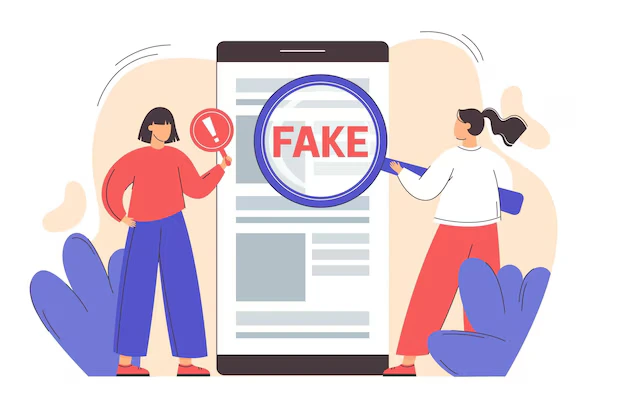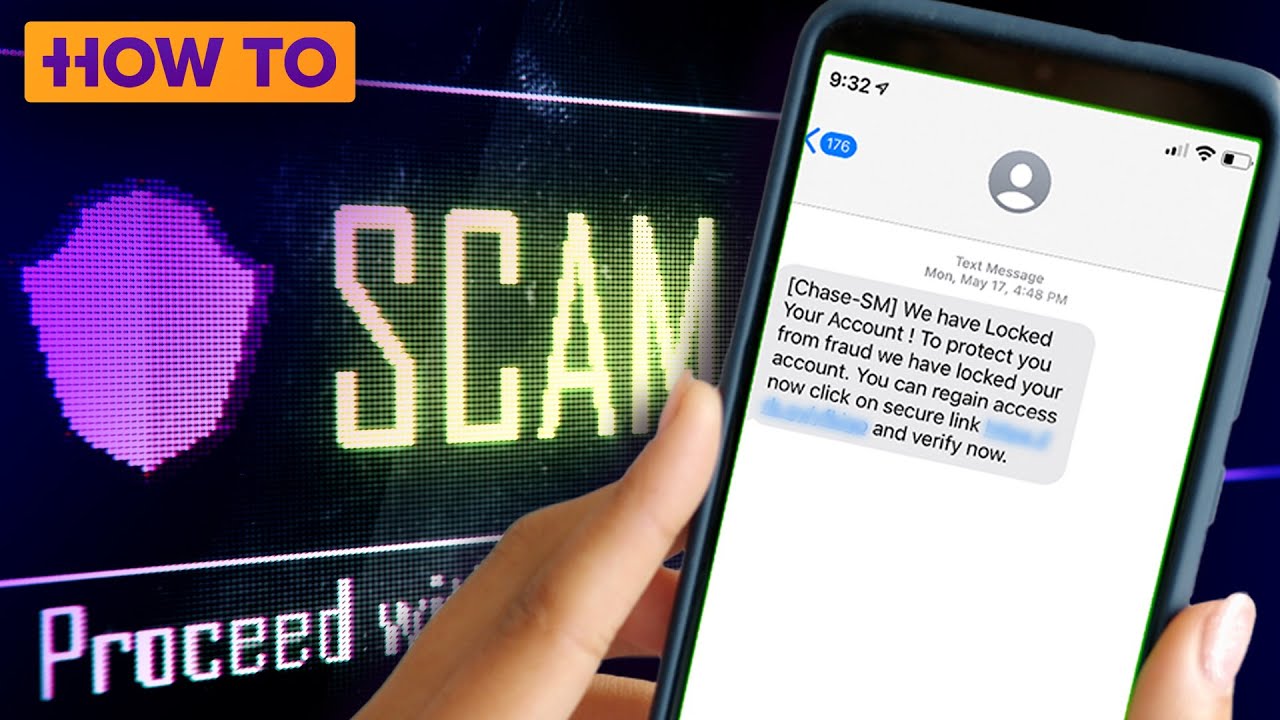As communication happens mostly through texts on mobile devices, it’s surprisingly easy to fake text messages. Whether it’s a prank, a mock conversation, or something more deceptive, apps and tools now allow users to create fake messages that appear startlingly real.
According to a 2023 survey, over two-thirds of people couldn’t tell the difference between real and fake texts in a controlled setting. This growing trend has raised concerns, especially since manipulated texts can be used in scams, defamation cases, or personal disputes. From creating fake messages for entertainment to more malicious purposes, the ability to falsify conversations is now at everyone’s fingertips.
However, while the technology may seem harmless or amusing, the consequences of using it unethically can be severe. Can you fake text messages? Knowing the legal, ethical, and personal risks is vital before venturing into the world of fake text messages.

Protect Your Brand & Recover Revenue With Bytescare's Brand Protection software
What Are Fake Text Messages?
Fake text messages are fabricated conversations that mimic real SMS text messages, iMessages, or chat app interactions created using apps, online services, or software. To counteract this, employing a free TTS reader can assist in analyzing message content for signs of fabrication.
These tools allow users to customize message content, sender details, timestamps, and even delivery statuses to make the message look convincingly authentic. While some use spoof messages for pranks, social media content, or fun mock chats, they may also be used to deceive or lie to people, an ethical and legal concern.
Fake messages can be designed to appear as if they come from anyone, whether it’s a friend, family member, business, or even a government agency. They often go unnoticed because they replicate every personal detail of a genuine text message, including the sender’s name, phone number, and layout. This level of detail can make it difficult to distinguish between a real and a fake message, especially in screenshots or visual media. Fake messages have surged recently, especially on social media, where people may create fictional conversations to entertain followers or stir up controversy.
However, in some cases, fake text messages are used maliciously, such as scamming people, damaging someone’s reputation, or manipulating legal situations. While fake text messages may seem harmless, using them to deceive others can lead to serious consequences, including legal action. Knowing the boundaries between harmless fun and potential fraud is essential when dealing with fake text message conversations.

How to Identify a Fake Text Message
So now comes the very important question _ how to identify a fake text message?
1. Suspicious Links or Short URLs
You ever gotten one of those “click here now” texts with weird-looking links? Like, it’s not even the proper site. Don’t even think about tapping it. Some of them look okay — clean layout, logos, the whole deal, but still off. Trust yourself. Open a browser and check it properly if you really have to.
2. Spelling and Grammar Mistakes
You know when something reads funny? Not only funny, but with huge grammatical and spelling errors. Stuff like “kindly confirm your debit details.” Who says that? Robots? Scammers do. Real brands? Their texts sound normal like humans.
3. Unusual Sender Numbers or IDs
So, the sender name is “AMZ2023Update” or some 15-digit number outta nowhere? Red flag. Instant delete. Brands usually use clean shortcodes or verified names.
4. Urgent Language or Threatening Tone
“Last warning.” “Your account will be closed.” Yes. That drama? It’s bait. Real people don’t talk like that in texts. They’ll call. Or email. Not threaten you.
5. Requests for Personal or Financial Information
Your password. Your card number. Your OTP. They’re asking for stuff they should never even see. If that message asks for personal info, close it. Forget it ever happened.

Protect Your Brand & Recover Revenue With Bytescare's Brand Protection software
How to Protect Yourself from Fake Text Messages
How to stop fake messages then? Here are a few pointers given below:
1. Do Not Click on Unknown Links
If it smells fishy, don’t click it. Get the message? Fine. Open Google. Type the real site. Do it yourself. Never tap stuff from strangers.
2. Use SMS Filtering and Anti-Spam Apps
iPhone or Android, doesn’t matter. They both got filters. Go into settings, turn that stuff on. Try a spam app. It won’t block everything.
3. Enable Two-Factor Authentication (2FA)
You know what 2FA is – use it. If someone steals your password, this little code thing stops them from doing any harm to your financial well-being.
4. Educate Family and Friends
You have to educate your family members, especially the senior members, who are not so much accustomed to these things. If you are present physically, then tell them by showing live demos. If you are away, then send them a message. Sit them down. Tell them, “Don’t tap links. Don’t share OTPs. Ever.” It works better than any antivirus.
How to Report Spam in India
These are a few pointers to note down if you are looking for how to report spam texts.
1. Report to TRAI via 1909 (India-specific)
Just forward the message to 1909. That’s it. Done. No app, no drama. Just shoot it over and let the system handle it.
2. Use Sanchar Saathi (Chakshu)
There’s a tool called Chakshu under the Sanchar Saathi portal. Use it for sketchy messages or fake calls. And if you don’t want to go through that? Just lodge a complaint directly through your carrier’s app or website.
3. Install TRAI’s DND 3.0 App
TRAI’s DND 3.0 app is actually useful. You can report spam, block junk, and even see if your complaint’s being processed. It’s free, and it works.
4. Cybercrime Reporting – When It Gets Serious
Got a message that looks seriously dangerous—like it’s phishing or has some virus link? Go to cybercrime.gov.in and report it right there.
Or just call 1930. You can also get help from your state’s cyber cell if things get messy.

Protect Your Brand & Recover Revenue With Bytescare's Brand Protection software
Legal and Ethical Considerations of Fake Texts
Using fake text messages raises important legal and ethical considerations, especially given their potential for harm in personal and professional contexts. Here’s an overview of the key issues:
Legal Considerations
Fraud and Deception
Faking text messages to commit fraud—such as misleading people into providing sensitive information, impersonating someone, or fabricating evidence—can lead to serious legal consequences. In many jurisdictions, scam messages fall under criminal offences like identity theft, defamation, or fraud.
Defamation and Libel
Fabricated text messages used to falsely accuse or damage someone’s reputation can be grounds for a defamation lawsuit. In cases where fake messages from people are presented as evidence in court or public disputes, they may result in legal action for libel or slander.
Privacy Violations
Impersonating someone else by creating fake conversations can be considered a violation of privacy rights. Laws regarding online impersonation vary by region, but many countries have strict regulations to protect individuals from such fraudulent activity.
Ethical Considerations
Trust and Integrity
On a personal level, creating fake text messages can lead to a breakdown of trust between individuals. Whether used in relationships, business dealings, or social settings, the discovery of fabricated conversations can irreparably harm trust and integrity.
Moral Responsibility
The line between harmless and harmful can be thin, even when done for fun or entertainment. Users must consider the impact of their fake messages, particularly if they are used to manipulate, mislead, or harm others.
While fake text message tools can be used creatively, they have significant legal and ethical responsibilities. Misuse can lead to legal action, damaged reputations, and a loss of trust.
Common Text Message Scams
Text message scams have become increasingly prevalent, exploiting the convenience of mobile communication to deceive unsuspecting individuals. Here are some common types of text message scams to watch out for:
Phishing Scams
Scammers send messages pretending to be from legitimate companies, like banks or service providers, requesting sensitive information such as passwords or account details. These texts often include urgent language, prompting the recipient to act quickly and provide personal information.
Prize and Lottery Scams
Victims receive messages claiming they have won a prize or a lottery. They may be asked to pay a fee or provide personal information to claim their winnings. Legitimate contests rarely require payment to claim a prize.
Delivery and Shipping Scams
Scammers impersonate delivery services, sending texts that claim a package is pending delivery. The message may include a link to track the shipment, leading to a phishing site designed to capture personal information.
Tech Support Scams
In these scams, individuals receive texts claiming their device has been compromised and offering assistance. The messages often prompt users to call a number where scammers attempt to extract personal information or install malware on their devices.
Impersonation Scams
Scammers may impersonate a friend or family member, often claiming they are distressed or need financial assistance. This tactic preys on emotions and can lead to financial losses for unsuspecting victims.
Awareness of these common text message scams can help individuals protect themselves from fraud. Always verify messages from unknown senders and avoid sharing sensitive information without confirming the request’s legitimacy.
Real-World Examples of Text Message Scams
While you may feel confident in detecting text scams, reviewing common SMS scam examples can enhance your awareness and help you recognise red flags. Here are three prevalent scams to watch out for:
Bank of America Text Scam:
A message might read: “Dear customer, Bank of America is closing your bank account. Please confirm your PIN at notbankofamerica.com/SCAM to keep your account activated.” This scam creates a sense of urgency by threatening account closure and enticing you to click the link. Once clicked, it may lead to a fraudulent website that asks for sensitive personal and banking information, putting your financial security at risk.
FedEx Text Scam:
A typical message could say: “Hello Angela, your FedEx package with tracking code AB-9456-JK65 is waiting for you to set delivery preferences: iscam.info/lmnopq.” Many people may find this message believable, given the frequency of package deliveries. However, clicking on the provided link could result in phishing attempts or malware downloads.
Free Money Text Scam:
You might receive a message stating: “You’ve won a prize! Go to tarrget.ly/scamprize to claim your $500 Target gift card.” This scam contains several warning signs, including an enticing offer of free money, a misspelled company name, and a suspicious link. Such messages exploit your excitement and prompt you to provide personal information or click on malicious links.
Key Takeaways:
- You can fake text messages using apps or software, but using them maliciously is illegal.
- Faked SMS text messages can appear realistic, mimicking real conversations, making distinguishing between genuine and fake texts difficult.
- Legal and ethical issues arise when using fake messages for fraud, defamation, or manipulation, potentially leading to serious consequences.
Conclusion
While it is possible to fake text messages using various online tools and apps, the ethical and legal implications should not be overlooked. These tools can be used for harmless fun or creative purposes, but they also have the potential for malicious misuse, including fraud, deception, and defamation. It’s essential to recognise the risks and responsibilities involved. Misuse can result in damaged relationships, legal consequences, and loss of trust.
Always approach fake text message creation cautiously and avoid using it in ways that could harm others or violate legal boundaries. Bytescare AI-driven technology detects, removes, and monitors unauthorised content 24/7. Safeguard your intellectual property from digital piracy so you can focus on creativity and growth. Secure your assets with Bytescare digital piracy monitoring—book a demo today and stay protected.
The Most Widely Used Brand Protection Software
Find, track, and remove counterfeit listings and sellers with Bytescare Brand Protection software

FAQs
Can fake text messages affect iPhone and Android users differently?
Yes, they can. Both phones are targets, but stats show iPhones—especially in office setups got spammed a little more. Doesn’t mean Android’s safe, though. If you’re using a smartphone, you’re already at risk.
What do fake text messages look like?
Like regular messages—until they don’t. They might say they’re from your bank, or a delivery update, but then the grammar’s weird. Or there’s a fishy link. If it feels a bit “off,” it probably is.
How to tell if you’re texting a fake person?
You’ll sense it. They avoid questions. Give vague replies. Push links too fast. Something just doesn’t click.
How do I stop fake text messages?
Start simple. Block the number. Turn on spam filters. Don’t touch any random links. Report it if it keeps coming. Also, set up two-factor login.
Are there any government apps or portals to report fake messages in India?
Yep, a few solid ones. The TRAI DND 3.0 app is great for blocking or reporting spam. Got a sketchy message? Use Chakshu via the Sanchar Saathi portal. And if it’s a serious scam, head to cybercrime.gov.in or call 1930. No drama. Just action.
Ready to Secure Your Online Presence?
You are at the right place, contact us to know more.


